
We asked professional hiker Saito Masashi, who has walked long trails around the world. Walking, traveling, tools
This content is sent with the cooperation of the Japan Gas and Petroleum Equipment Manufacturers Association
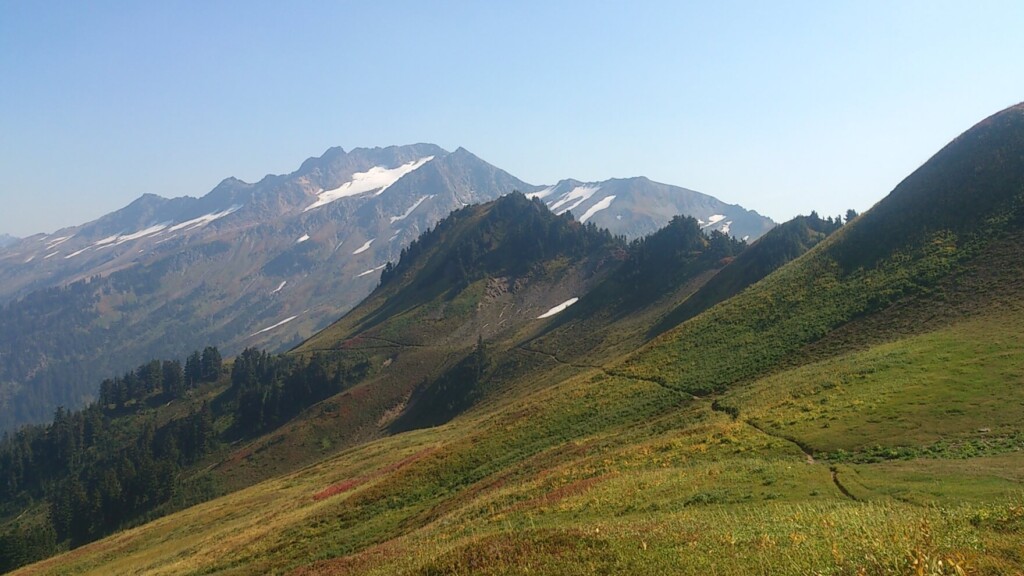
Nature has been my biggest playground ever since I was a child.
This is an overseas documentary program that happened to be caught in my hometown of Yamagata.
Seeing young men trying to take on the 3,500km Appalachian Trail in North America,
For some reason, I had a feeling that I felt like I might go here too.
Two years later, I was standing at the entrance to this trail, which only a few Japanese people could walk with one hand.
Since then, I have been walking on pathless paths that broadly convey the appeal of walking trails.
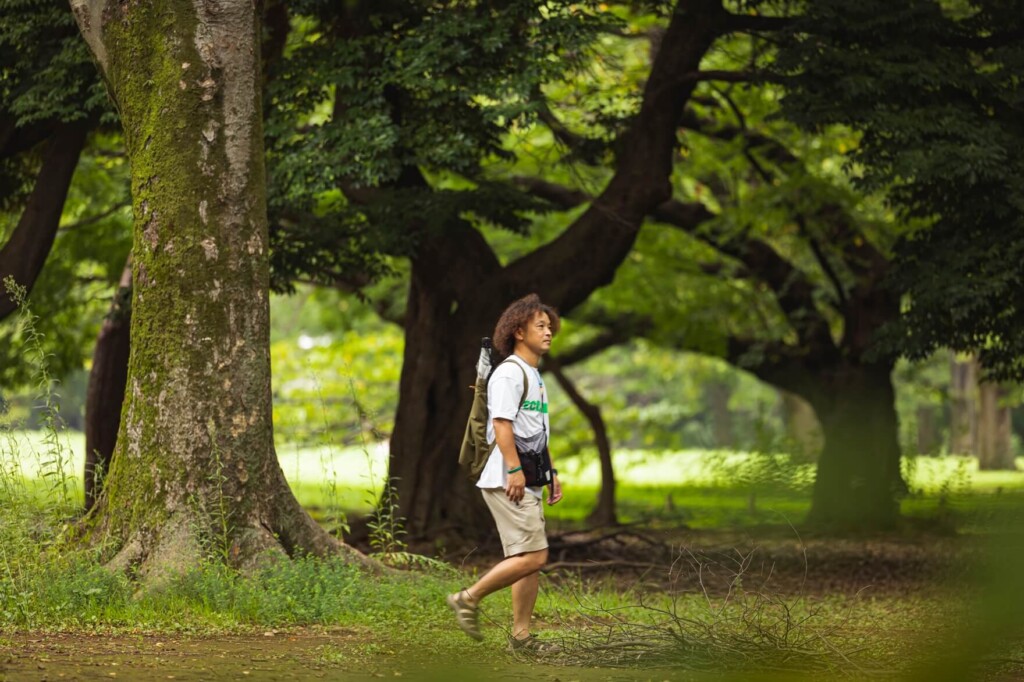
Why keep walking?
What is the real joy of thru-hiking?
What did you prepare from the zero state, how did you continue your journey?
What do you think when choosing travel tools?
We asked professional hiker Saito Masashi, who has been tracing long trails around the world, about walking trails, trail culture, and how to meet his tools.
table of contents
- Yamagata's wild playful fans will be guided to the North American Long Trail
- And then head to the Appalachian Trail
- Kato Noriyoshi taught me how to deal with the trail
- When choosing tools, "minimum for yourself + α" is the perfect choice
- Saito-san's way of meeting "your own tools"
- To all the hikers heading for the trail, "If you're going to use a combustion device, remember this."
Yamagata's wild playful fans will be guided to the North American Long Trail

He was born in Shinjo City, Yamagata Prefecture. My father was a JNR employee, so I was transferred a lot, but in the end my father said, "I don't want to go back to a place with lots of snow," and settled in what is now Kamiyama City. My father was a man who liked mountains, fishing, and motorcycles, so I was deeply influenced by this. Since I was a child, I've been riding behind my father's bike and going to the mountains to pick wild vegetables. I do everything lol.
I came to Tokyo once when I was a student and got a job in Tokyo. However, after my father passed away, I decided to return to Yamagata because I was my eldest son and had a high school sister at the time. From there, I returned to my life of motorcycles, fishing, touring, camping, and hiking.
One day, I suddenly thought that it was the BBC or something in the middle of the night, and there was probably a documentary about the Appalachian Trail. It follows several hikers, and there is a scene in which a young hiker starts the Appalachian Trail. When I saw the girl walking down the trail, saying, "I'm coming," I had a feeling that I felt like something was going. At least that view remained in the back of my mind. That was what happened in 2003.
After that, when my sister's marriage coincided with the conversation of being transferred at the company I was working at the time, that premonition suddenly appeared in front of me again. So I was like, "Huh, wouldn't I be able to do it at this time?" When I consulted with relatives, colleagues, and friends around me, they all said, "It's just like you," and my sister said, "I think it's fine (because you've been working hard so far) and I thought it would be fine." Now there's no more confusion.

I left for North America in 2005. At that time, the term "long trail" was not known at all, and I think there were probably about five Japanese people who had walked the long trail in total.
And then head to the Appalachian Trail
The first trip was completely unknown. I don't really understand English, and I couldn't get the materials, so I couldn't get it from anywhere, and I was groping around everything. Fortunately, Amazon.com existed, so I managed to get a guidebook. That's how I went, so I had no choice but to just prepare for the time I left and then all I had to do was procure everything on site, so I ended up on the journey with my luck left to heaven.

New Hampshire and Maine border in the mountains
Then a hiker who happened to be at the same bus stop called out to me, "It's cheaper to split the bill, so let's go with you." From there he walked with me for about three days. He introduced me to hikers, kept telling me how this is done, and how it's better to eat something like this on the trail. We broke up halfway through because we were different from him, but after that, we met various section hikers (hikers walking some sections of the long trail) in various situations and were really kind enough to teach them, "In America, it's dangerous to make eye contact with bears, so buy sunglasses. In the next town, buy sunglasses," and " Crocs are very convenient so it's good to wear them ( at the time Crocs were imported to Japan and before it became popular ).)
At the time, the internet was not well developed, so the "registers ( connections for communication between hikers )" located in shelters (evacuation shelters) on the trail were also a valuable source of information. They say things like, "The pizza here in this town is delicious" and "This restaurant is terrible." If there was any information about delicious pizza, everyone would walk around saying things like, "Pizza, pizza" or "Bee, Bee, Bee." Looking back, I was in a time when simple encounters in nature, where love for nature allowed us to connect our hearts ( of course, it's not that you can just go on a trail with the utmost importance ).
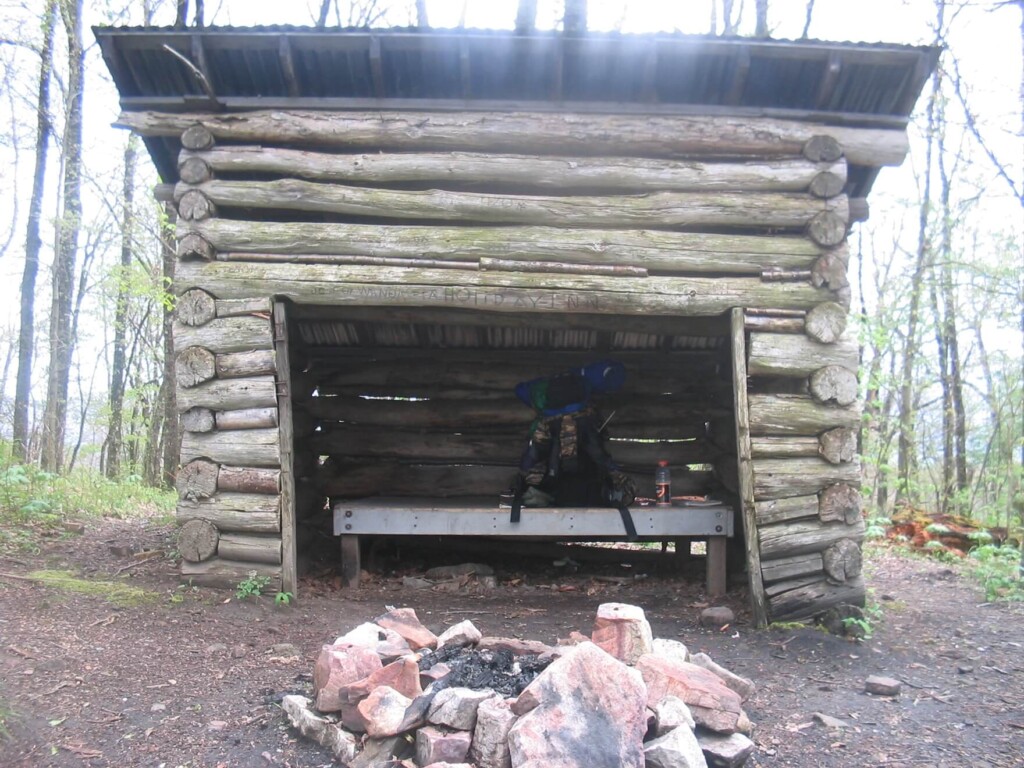
A small shelter for two people
But this is actually the appeal of the Appalachian Trail. You can interact with a variety of communities in a variety of situations, and continue walking through nature, receiving support and support from various people, as well as many trail magic ( a general term for lucky coincidences on the trail, a once-in-a-lifetime encounter, etc. ), and at the end, everyone reaches the finish line. This experience made me fall in love with the trail and start to think, "Next time, let's go to the PCT (Pacific Crest Trail)." In that sense, the Appalachian Trail is the ideal trail in America, although it's a modest but ideal.
Kato Noriyoshi taught me how to deal with the trail
It was also the Appalachian Trail that I met Kato Noriyoshi.
My backpack broke midway through, so I was forced to stay in a certain town. As soon as it opened early in the morning, I entered the store, packed and put away my luggage for about three hours, and finally bought a large backpack at the store, repacked all of my luggage, and when I left and opened the door, I thought I had passed someone with an Asian appearance, so I suddenly turned around and found out that Kato was. They both said, "Saito-san?" and "Kato-san?" In fact, Kato lost the map and accidentally stopped by this town. So I decided to "I'll have a chance, so I'll eat pizza."
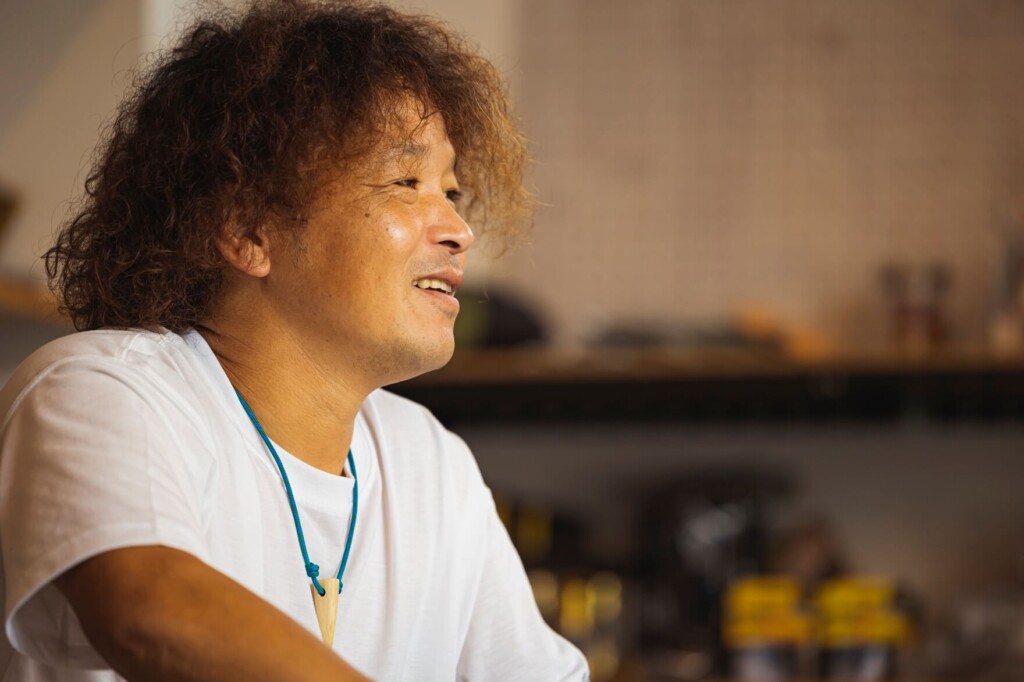
Kato Noriyoshi, a leading through-hiker since then, spoke to me, who I had just met by chance in town, with pizza in hand. There are so many things that I don't remember everything clearly, but what I still remember is that by walking this trail, Kato said that walking the trail gives us a clear picture of American society. That's why people were talking about how I wanted to approach the trail a little more from this angle. At that time, my low-consciousness was completely throbbing, but I still can't forget how passionate he spoke. In fact, when we met again, we talked about this kind of story, and it was a refreshing inspiration that we were walking along the same trail and looking at the world from a completely different perspective than ourselves. But I don't think I had that deep understanding at the time.

But now that I have decided to take over Kato's will, I can really feel what he was talking about as I walk the trail. Even the stories I've heard in the news from Japan are when you actually meet people from different backgrounds on the trail (where you meet a truly diverse range of people on the trail), you can see that there are diverse views that are not simply white or black. It's not that either is correct, but both are reality. For me, walking trails is of course a sense of fulfillment and accomplishment that lies in the great outdoors, but it is not only just that, but it is also just as important to experience reality that is different from the knowledge gained on TV news by interacting with various people directly on my trip.
In that sense, in Japan, the Michinoku Sea Fleet Trail is one of the trails you should definitely walk. If you actually walk around the area, which is said to have been recovered from the earthquake, not from afar, but from nature, rather than looking back at it, you will see the more vivid reality and atmosphere beyond the processed information reported on television. You won't be able to see the endless distortion and discomfort of the high seawall unless you actually go to the area and see it with your own eyes, and I would like you to feel the discomfort more. It's great to actually get to see the site and hear the voices of various people and understand it well through your own filters.

Before Kato Noriyoshi passed away, he often said, "We've come to an age where we can be born and die, even if we don't get directly involved in nature." Some people may think that's fine, but I'm kind of keen to be able to provide such people with an entryway to help them understand the value of nature, or rather an entryway that makes them think, "I'd like to go and get into nature a little bit." If you can even be aware of the comfort and irreplaceable value of nature that humans as living creatures sleep, you may be able to understand the feelings of non-human creatures. I think if more people like that will become more common. "I hope someday, it will become common for foreign hikers to see them walking on Japanese trails." Kato-san used to talk about this a lot even before he got sick. I hope that not only powder snow will be able to travel for three seasons, but also for powder snow.
When choosing tools, "minimum for yourself + α" is the perfect choice
I'm trying to choose the lightest tool I'll take on the trail, but in the end, there are a lot of things I'll bring, so the overall weight of the backpack isn't quite light lol.
Especially when it comes to things that sleep, we are particular about ensuring comfort that is satisfying, without considering weight limits. To walk long trails, you need to regain your strength while you sleep. If I'm stingy about the weight and falling asleep thinking it's cold, I would definitely want to bring something warmer even if it's overspec.
Some hikers walk by changing tools at halfway point to achieve their goals. This makes it lighter equipment, allows you to walk faster, and increases the chances of success. However, in my case, even if I didn't get any speed, I think it would be a hiker who would walk from start to finish with this equipment I had decided on. I want to enjoy adapting to nature, or rather enjoying being fully immersed in nature. In that sense, it's more appropriate to think that the concept of my equipment list is "minimum for myself" rather than the minimum (lightest).
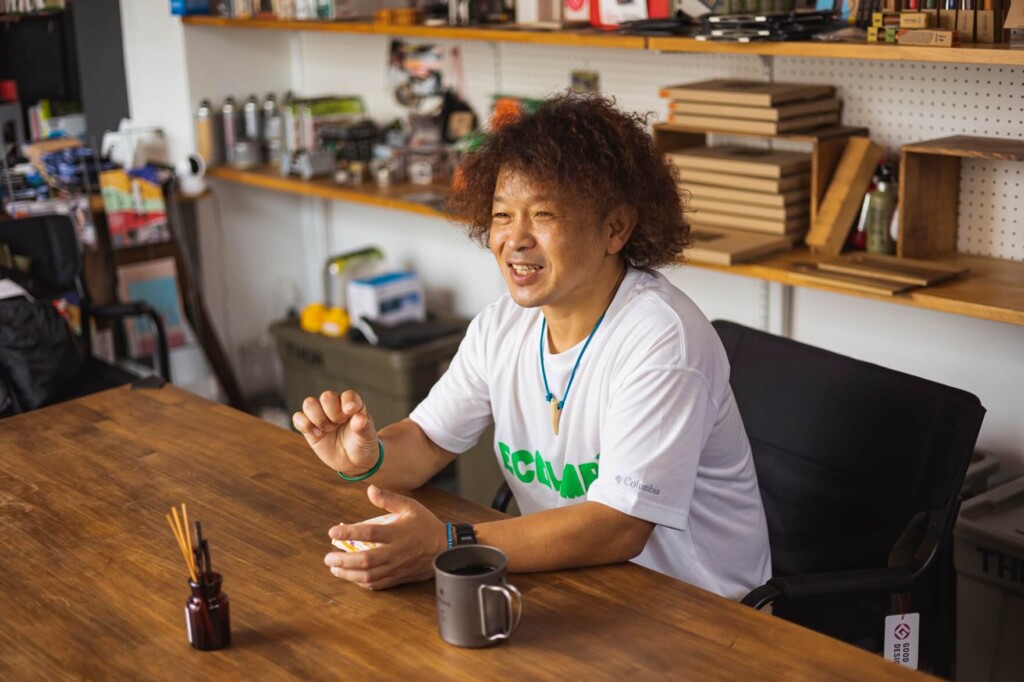
When walking along the trail, there are quite a few people who have their own preferences, and at first glance there are quite a few who carry something that seems to make you think, "Why do you have this?" But that's actually helpful, and it's also the best part of traveling to discover the particulars of other hikers.
've been using bamboo cutlery that I happened to find in a town called Ashland in 2012 now available for purchase in Japan ). At first glance, this is bulky and not light, and may not look very functional, but it is simple and easy to use, and the butter is simply easy to apply. Over there, it's great for toast, bagels and English muffins. Also, this bamboo material looks really good when used. Of course, it's lighter and more compact, but for me, I can't help but feel like I'm cutting it down with a fluffy spoon or something when I want to relax.
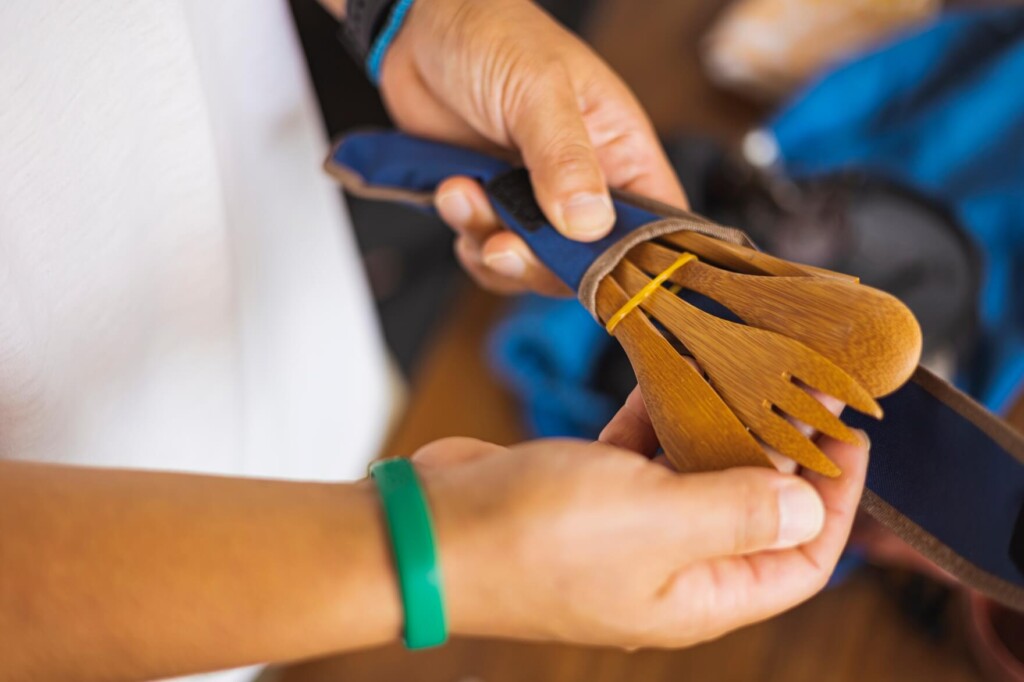
At glance , you may think, "I'm going to go to the trouble of making something so bulky," but when I drink coffee while keeping warm, I feel like I'm feeling a sense of "Oh, I'm drinking it." It's a small thing, but it's just the completely extraordinary space of backcountry that I don't want to abandon my everyday life. By leaving even a little bit of everyday life, you can ease the tension and stay as you are. Well, these things pile up and the loads continue to increase, but it's important to walk along the trail for a long time. If the coffee tastes better just by different dishes, then this one is better! That's what I think.

If the purpose of a trip is not "speed," I don't think "lightness" is justice in all. Therefore, if you cannot compromise on your sensibility (after achieving the necessary performance), you should prioritize your "like" first. I think that's where a person's personality comes into play. For example, if you can withstand the cold, you can just make a thin down jacket, while if you don't like the cold, you can make it a little thicker or bring another one with you.
I don't think luggage or equipment will follow the textbook at all. At least my style is like that. Rather than saying "this is the right answer," I'm thinking about how "minimality, plus alpha" would be just right for me, depending on my body. As a result, my style may be the type of person who normally holds luggage, but yes, that's different for each person too. I think it would be fine to think that which one to choose, and whether it would end up being more of an ultra-light style or a classic style, after all.
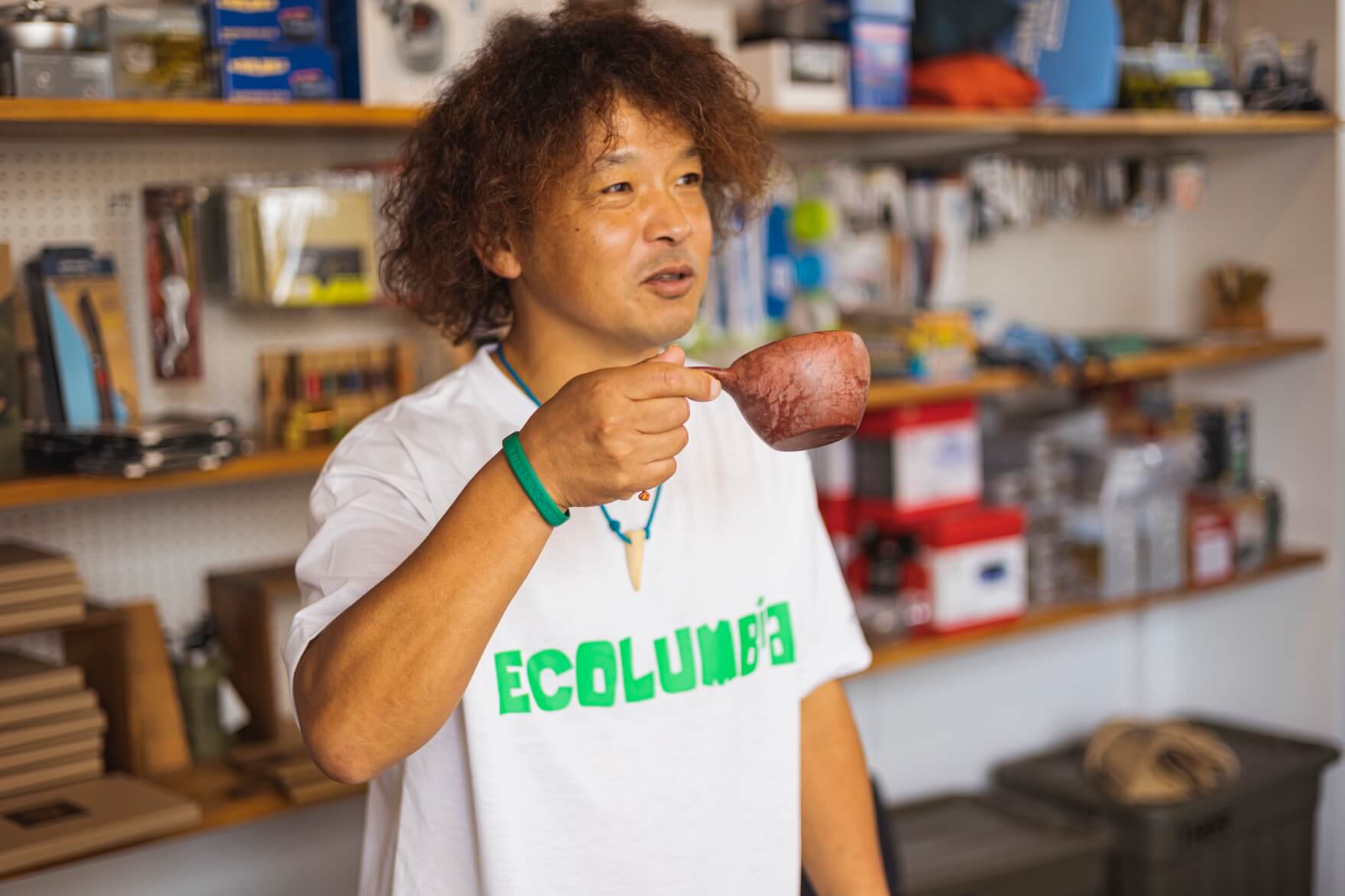
Saito-san's way of meeting "your own tools"
Since I was in an age where there was little information, I didn't have a reliable smart list from the beginning, but I was able to accumulate raw experiences such as trial and error, failings and discoveries through a one-time encounter. It might be cool to put it into words, but in reality it's a challenge because there are so many unexpected things. At Appalachian, I changed my tent to a hammock tent halfway through, and I've bought three pairs of shoes again. I broke four backpacks and replaced them.
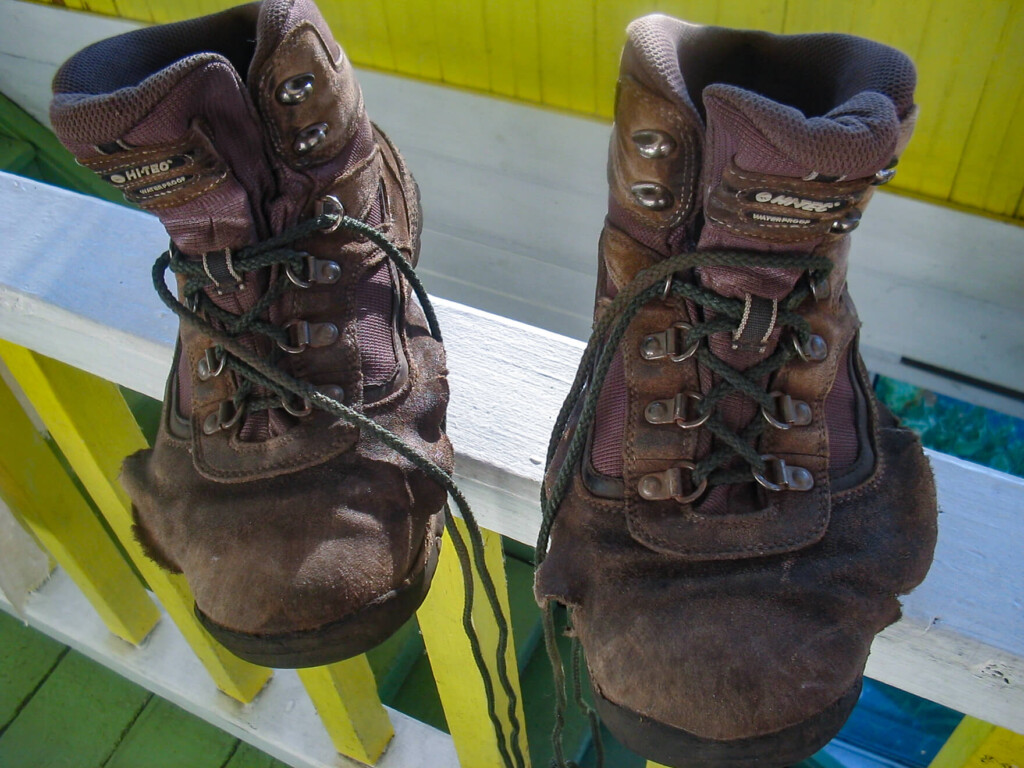
Second boots (New Hampshire)
I'm not particularly a "XXX fan" for the stove, so I've chosen and used fuel models that suit the time period and trails. When I first started walking the trail in 2005, outdoor gas cartridges were difficult to obtain, so everyone used alcohol stoves. However, in 2012, on the other hand, almost all people with alcohol stoves were walking in front, like us, and the mainstream fuel was completely gas. At that time, I really felt a generation gap. It is probably because gas is much easier to obtain than before, and now there are sections where alcohol is prohibited just because it causes wildfires, so the situation is constantly changing.
When I walked the CDT (Continental Divide Trail) in 2013, I tried out all the various products on-site and finally chose SOTO's gas stove. This is a stove that can also be used as fuel for regular gasoline, and in terms of ease of access to fuel, I think this is the most flexible in America. I went to CDT and New Zealand with this.

The next time I went to Australia, it was difficult to buy gasoline, so it was a problem. So we quickly managed to use a gas burner, and halfway through we were able to use the latest model that can be used both gas and gasoline. Gasoline is still cheaper than gas, so for me, this model, which can handle both, is still the first choice. In this way, I don't fix firearms with this, but instead try to think of the best ones for each era and trail.
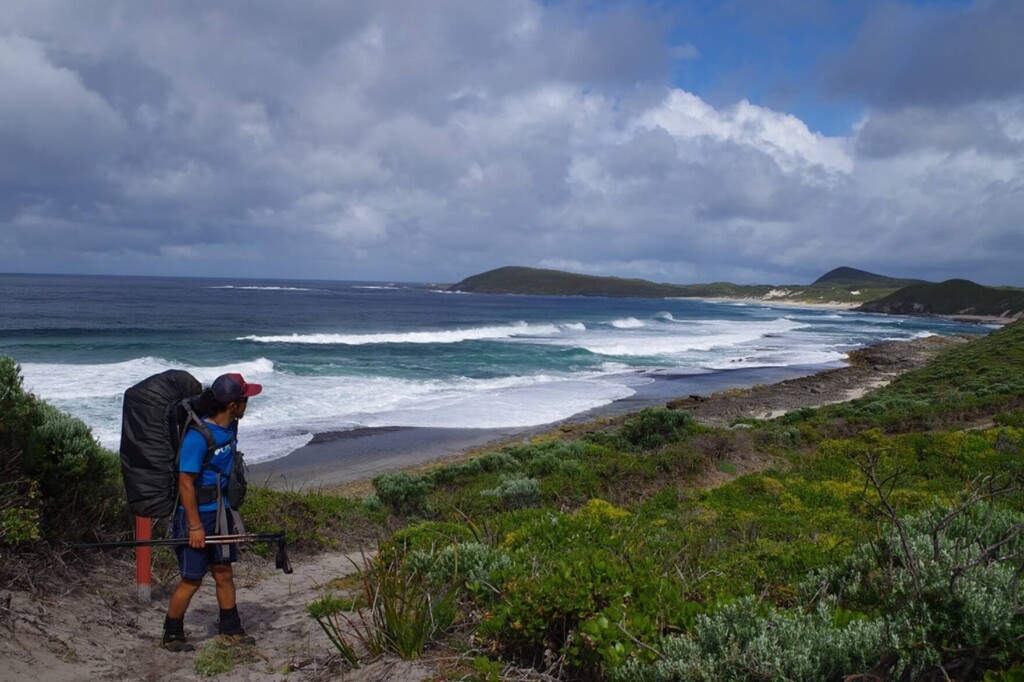
Vivalman Truck (Australia)
Even if you use a variety of tools like this, you end up reaching the point where you can't understand any tool unless you use it. For me, whether it's excellent in performance or someone recommends it, it's extremely important to actually try and pick it up in the end. It's not just about firearms, but if you walk on a trail and get injured, you won't be able to get a hospital right away, so you won't be able to take a break right away. You have to cure it by walking, deceiving it, so in that sense you have to understand your body.
The same goes for the tools, and even if they break halfway through (at the time it was not easy to replace or order), you have to somehow extend the tool to live, so you have to understand the tool as well. For me, I felt that walking on long trails was a huge test of the overall ability to live. Therefore, when it comes to choosing tools, I would like to value whether the actual skin sensation is good or not. I don't know if I don't use it. In that sense, I would like to continue to challenge myself with new tools without making any decisions.
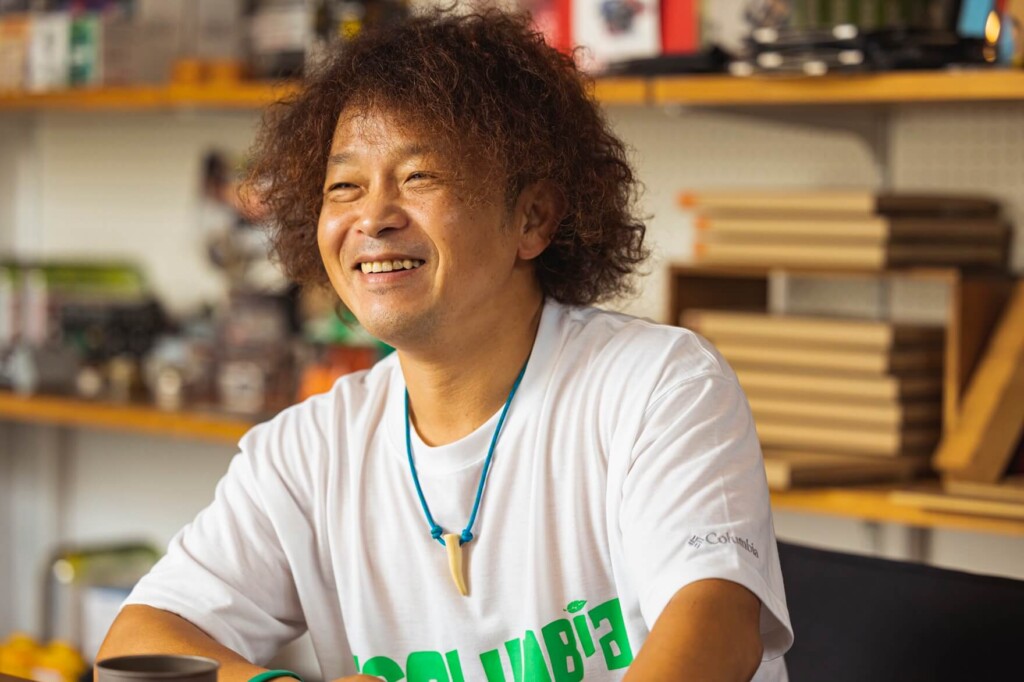
To all the hikers heading for the trail, "If you're going to use a combustion device, remember this."
The handling precautions for both gas stoves and gas stoves are the same, but this time we will use gas stoves as an example.
1. Sorry if you didn't know! Be careful of carbon monoxide poisoning
One of the most important things to keep in mind when using gas appliances such as stoves and lanterns is the accident caused by carbon monoxide poisoning. Accidents occur every year, not just outdoors. If you are using gas appliances, first and foremost, know about this danger.
When gas equipment is used in areas with poor ventilation, the oxygen required for combustion is insufficient, causing incomplete combustion, resulting in carbon monoxide. Inhaling it can block the transport of oxygen by the blood, causing cells and tissues throughout the body to become oxygen deficient, causing various symptoms, and in the worst case scenarios, killing you. This is carbon monoxide poisoning.
What's scary is that there are very few clear signs of whether or not you are currently poisoned with carbon monoxide. it is "colorless and odorless," it is difficult to tell whether carbon monoxide is produced or not, and it is also it is generally similar to the symptoms of a cold (influenza) poisoning. If it progresses to moderate or severe, it is too late as it will no longer be able to move on its own. This is why carbon monoxide poisoning is said to be a "die disease that will eventually lead to death."
To avoid such troublesome and terrifying carbon monoxide poisoning, all you need to do is not create a situation where carbon monoxide is produced. Be sure not to use gas equipment in tents, cars, or other enclosed indoors just because it's cold outside. If you find yourself in a situation where you find something strange that is on top of the page, make sure to move to a place with fresh air immediately.
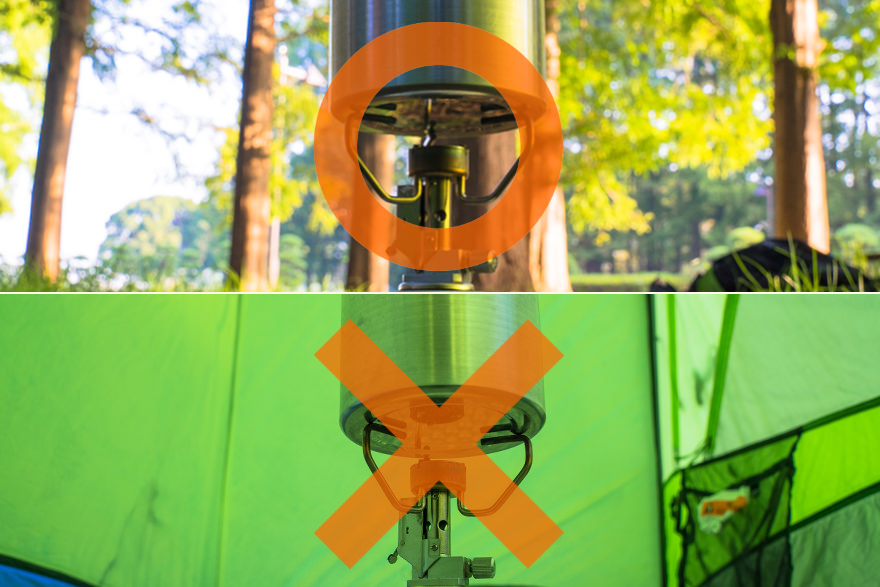
It is dangerous to use gas equipment indoors such as tents.
2. Don't forget to check the O-ring before taking it to the trail
An "O-ring" is a rubber ring that is attached to the part that connects the gas appliance to the gas cartridge. This O-ring is made of rubber, so it is a consumable product that will deteriorate over time even if it is not used.
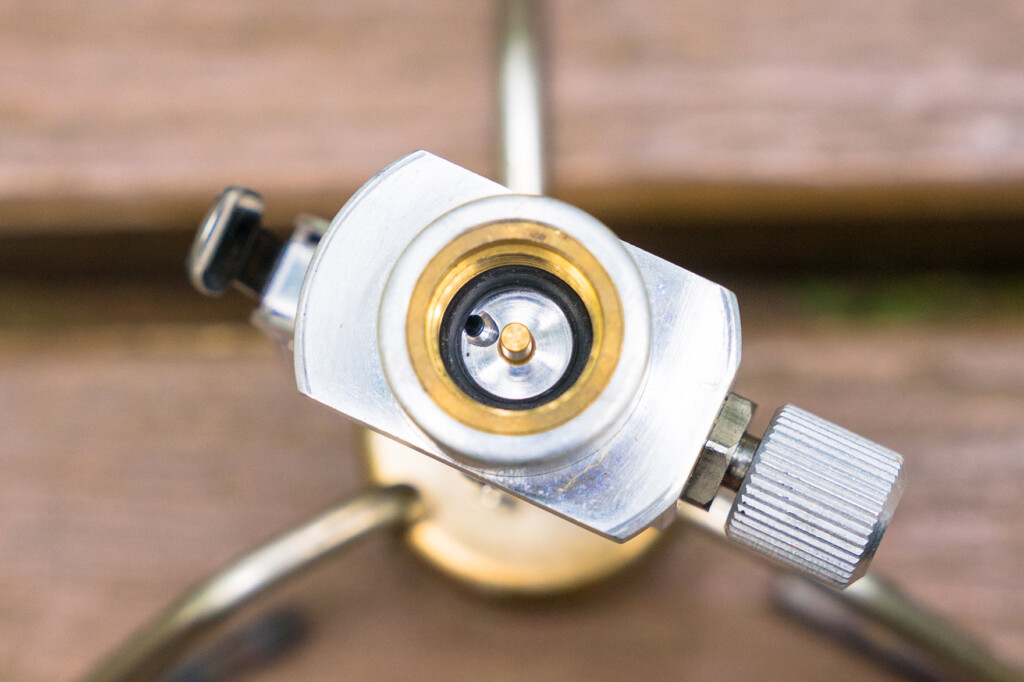
It is hard to notice deterioration of the O-ring, but you need to check it just in case.
That's why it's important to check for deterioration. Are some parts broken, slit, or cracked? Even if it shrinks or becomes hard, it is a sign of deterioration. To prevent accidents caused by gas leaks (burns, fires, bursts, etc.), be sure to "visually" before going to the mountains to ensure there are no abnormalities before packing.
By the way, here is an O-ring photo that compares an O-ring that I haven't replaced for over 10 years with a new O-ring. It is slightly shrinking and has a markedly dented mark. The surface is also muted and the elasticity is no longer possible. On the other hand, the new O-ring (on the right side of the photo below) has a smooth surface and elasticity, making the difference obvious at a glance.

[O-ring photo] The left side is an O-ring that has deteriorated over time. The surface is damaged, loss of elasticity, and pressure prevents the mold from returning. The difference between the normal O-ring (right of the photo) is obvious.
If you experience abnormal noises or odors while the gas cartridge is installed, do not use it, and if there is any abnormality, consult your dealer or manufacturer. Also, you must not use anything other than the original O-ring specified by the manufacturer. Even if you have replaced the O-ring, the item may have a lifespan and may have an invisible deterioration. We recommend replacing your stove after 10 years.
3. Before you buy! Does the burner used in Japan have the "PSLPG mark"?
In order to sell gas-fueled outdoor cooking burners in Japan, it is mandatory to obtain the "PSLPG Mark." The "PSLPG Mark" is a mark that passes strict inspections and meets the national gas stove standards set by the government. In other words, products with this mark are proof that they have passed the inspection stipulated by law. However, in recent years, many imported products that have not acquired the "PSLPG Mark" have been circulated, mainly on the Internet.

The PSLPG mark is included and displayed on the product itself, so please check with the store to see if it has been obtained before purchasing.
Of course, even if this mark is attached, it cannot be said to be 100% safe unless each person uses a gas stove correctly, but products that do not have one are products that have not passed the inspections set by law. To ensure safe mountain climbing, make sure you have the "PSLPG mark" before purchasing (if you're not sure if there is a mark, ask the store staff).
Supervised by: Japan Gas and Petroleum Equipment Manufacturers Association → https://www.jgka.or.jp/index.html
Saito Masashi Profile
Since 2012, he has been active as the only professional hiker in Japan. In order to promote trail culture, he walks overseas trails and contributes mainly to outdoor media, while also creating trail courses in his hometown of Yamagata. We were particular about thru-hiking (a way to walk the route in one year), and we were able to exceed 22,000 km (more than half the globe) on the trails we thru-hiked. He also works in the general outdoor activities, and is also a lecturer on camping, crafting, slacklines, and trail meals.
Saito has been working as a life's work to create trails in his hometown of Yamagata, and this year he is currently developing the Shirataka Hill Trail, which even beginners can easily take on. If you are interested in other projects, please check out this page for more details. →Go to YLT Club homepage


